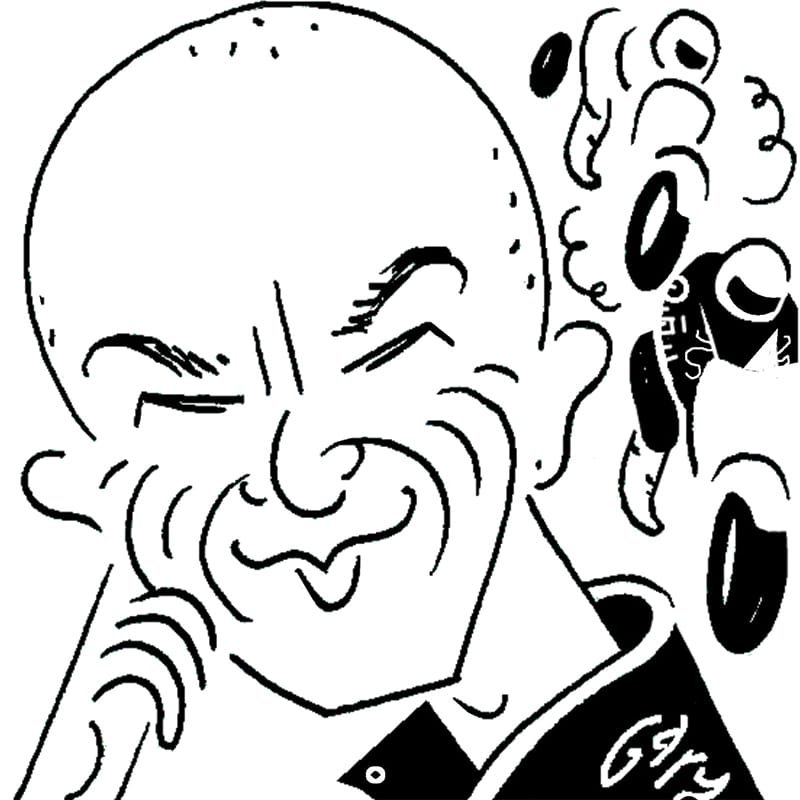Mat Oxley: 1953 film The Wild One caused immense damage to motorcycling, still visible today
‘The movie was inspired by the events of Hollister and created the image of the outlaw biker’
For once, this page isn’t strictly about motorcycle racing, but its subject has affected the sport for many decades. Seventy years ago The Wild One was released. The movie was inspired by the events of July 1947 – or rather, by wildly exaggerated reports of those events – when a few thousand motorcyclists met in the Californian town of Hollister for an annual happening that included racing, socialising and drinking. Things got out of a hand: bikers roared up and down the streets, sozzled as skunks and loud as hell, and there were a few dozen arrests for drunkenness, reckless riding and disturbing the peace.
This was all normal behaviour for the bikers involved. Most of them had fought in World War II – when they were demobbed they bought ex-army Harley-Davidsons for a few dollars and started riding together and drinking together, often at the same time.
It’s no surprise they found returning to everyday civilian life too boring after fighting, so they went looking for camaraderie and excitement, their way of dealing with PTSD (although they probably didn’t know it).
This was nothing new. After World War I, TE Lawrence – Lawrence of Arabia – bought a series of high-performance Brough Superior motorcycles, which he rode very fast to escape the terrors of his wartime experiences.
“When my mood gets too hot and I find myself wandering beyond control I pull out my motor-bike and hurl it top-speed through these unfit roads for hour after hour,” he wrote. “My nerves are jaded and gone near dead, so that nothing less than hours of voluntary danger will prick them into life.”
Back to Hollister. Even though there was no riot the event became known as the Hollister Riot because some members of the media don’t like facts to get in the way of a good story. Journalists, eh? Thus the Hollister disturbance was blown into something entirely different by the newspapers, which roused Hollywood into producing a movie of pure fiction. The Wild One did immense damage to motorcycling. It created the image of the outlaw biker, which struck fear into many Americans. This had a knock-on effect, because the sport of motorcycle racing became unattractive to many commercial sponsors.
At the same time the cool, renegade swagger of star Marlon Brando – “What are you rebelling against, Johnny?” “Whaddaya got?” – no doubt encouraged other rebels without a cause to join the ranks of American biker gangs. These included the Hells Angels, named after an American air force squadron, which was founded by a soldier who had split from the Pissed Off Bastards, one of the first biker clubs established after the war.
These biker gangs were real and they were badly behaved, but their behaviour was almost always sensationalised by newspapers, exacerbating the American public’s dim view of motorcyclists.
“Many consider the motorcycle as a weapon of the badly behaved”
The American Motorcyclist Association was horrified by this turn of events. In an attempt to change public perception it issued a statement that insisted 99% of motorcyclists were well-behaved citizens, while only 1% were a problem. The badly behaved seized this number with glee, proudly proclaiming themselves to be ‘one-percenters’ while proudly wearing ‘1%’ patches on their riding gear.
Britain didn’t take long to absorb this latest chapter of American culture, as usual adding its own ingredients to the mix. The mods and rockers riots of the summer of 1964 were very real. The rockers rode Triumphs and Nortons and wore black leather jackets and oily jeans. The mods rode Lambretta and Vespa scooters and wore tailor-made suits and button-down collar shirts. They were never going to get on.
The two sides fought each other on seaside-resort beaches, from Brighton to Skegness. Of course, the British tabloids embellished the reality, working the public into a panic and creating a cultural and societal turning point in British motorcycling.
Before 1964, Britain’s greatest motorcycle racers usually came from middle-class families: Les Graham, Geoff Duke, John Surtees and Mike Hailwood. Afterwards and ever since they’ve usually come from working-class families: Phil Read, Bill Ivy, Barry Sheene and the country’s most recent MotoGP winner Cal Crutchlow, whose dad was a rocker.
Those battles on the beaches and the lurid headlines that followed made motorcycling unattractive to pretty much anyone who believed they had a higher position in society, which included company bosses, who now viewed motorcycle racing with the same suspicion as their American counterparts.
This is a problem with which the sport has struggled since, despite Honda’s famous ’60s advertising campaign – “You meet the nicest people on a Honda” – which tried to convince people that not all motorcyclists are beer-swilling maniacs.
MotoGP boasts around 350 million TV viewers, which, until Drive to Survive arrived, was more than half Formula 1’s figure, but MotoGP attracts only a tiny fraction of the money that’s poured into F1.
There are other factors involved, like the size of the car industry versus the size of the motorcycle industry, but there’s no doubt that many people still consider motorcyclists to be second-class citizens and view the motorcycle as a weapon of the badly behaved. Which, as already observed, is true to a small extent and false to a large extent.
Mat Oxley has covered motorcycle racing for many years – and also has the distinction of being an Isle of Man TT winner
Follow Mat on Twitter @matoxley













































































































































































